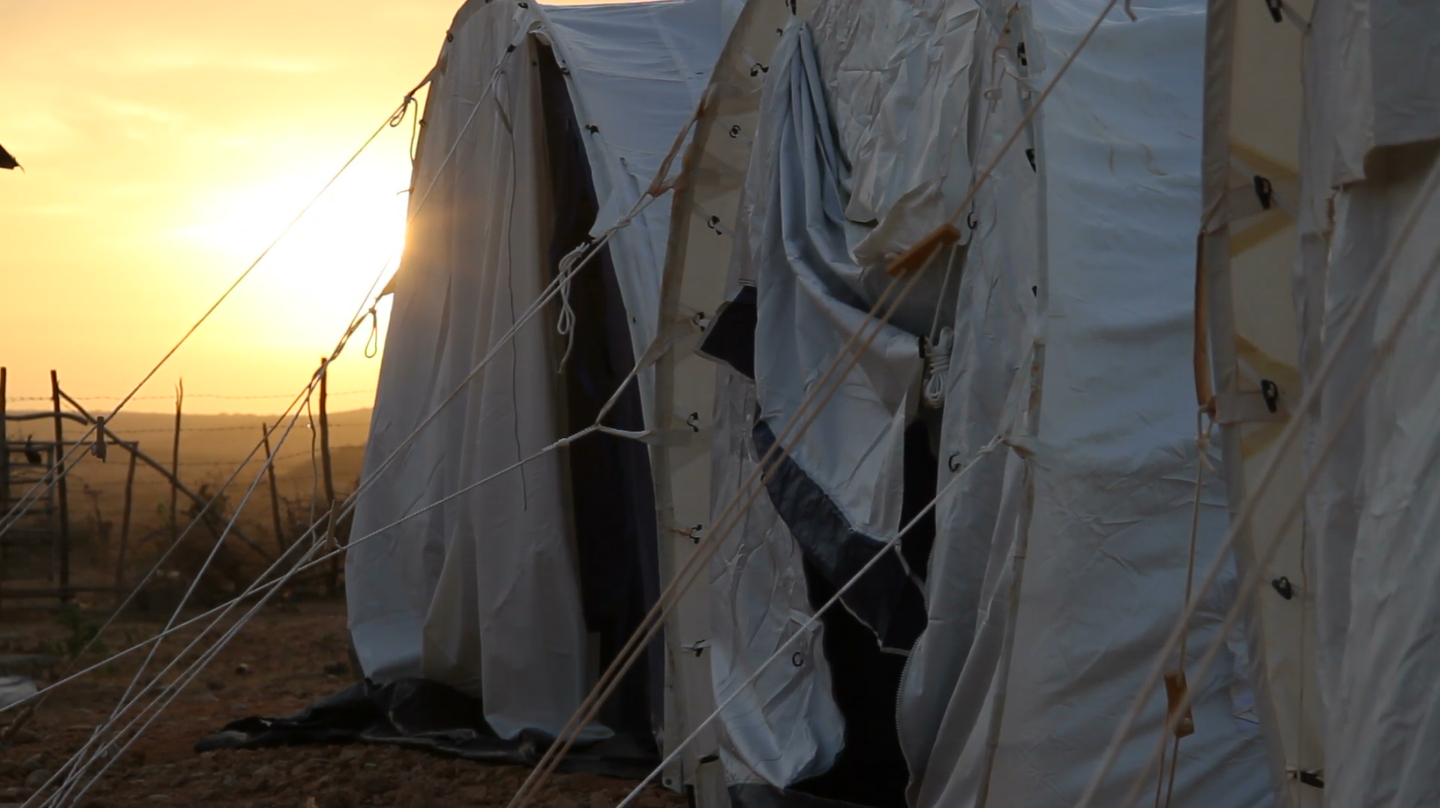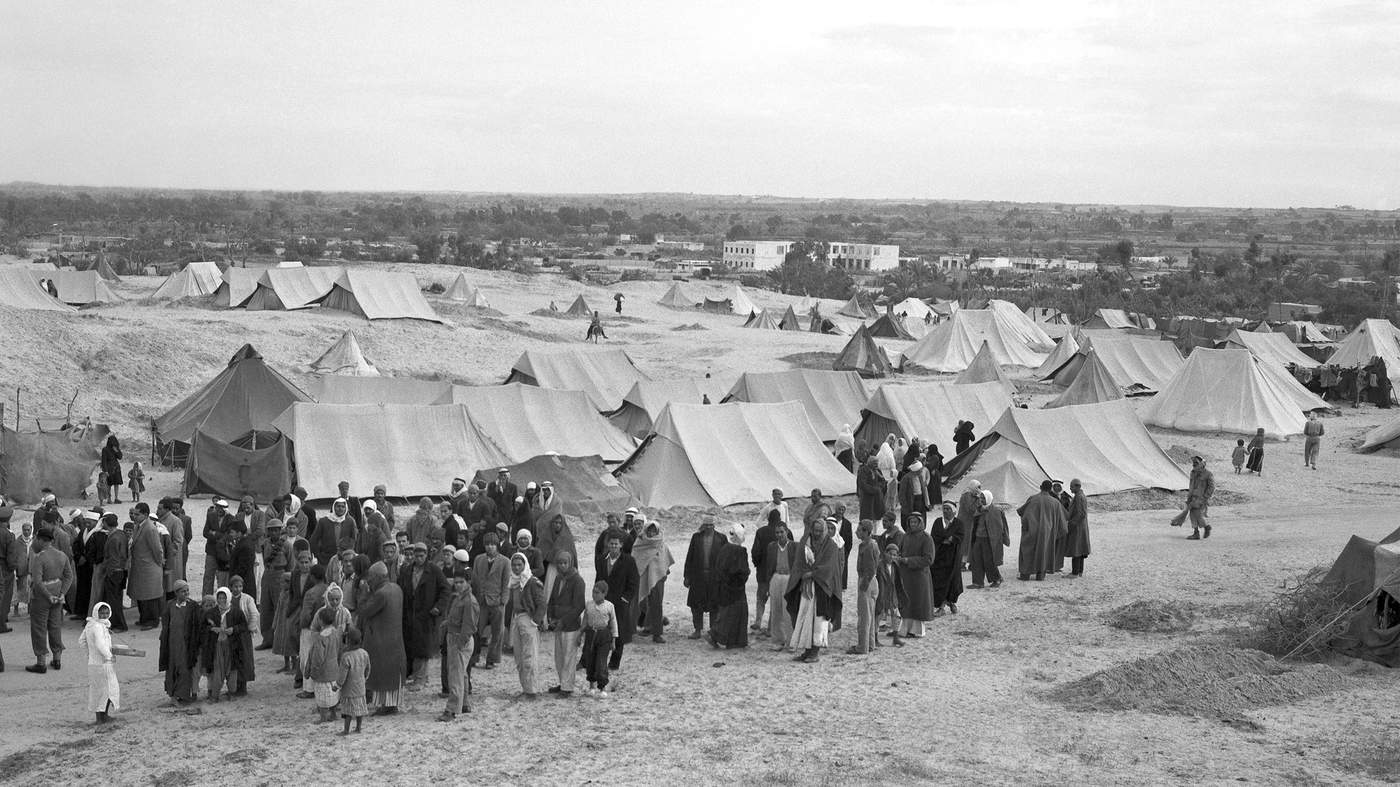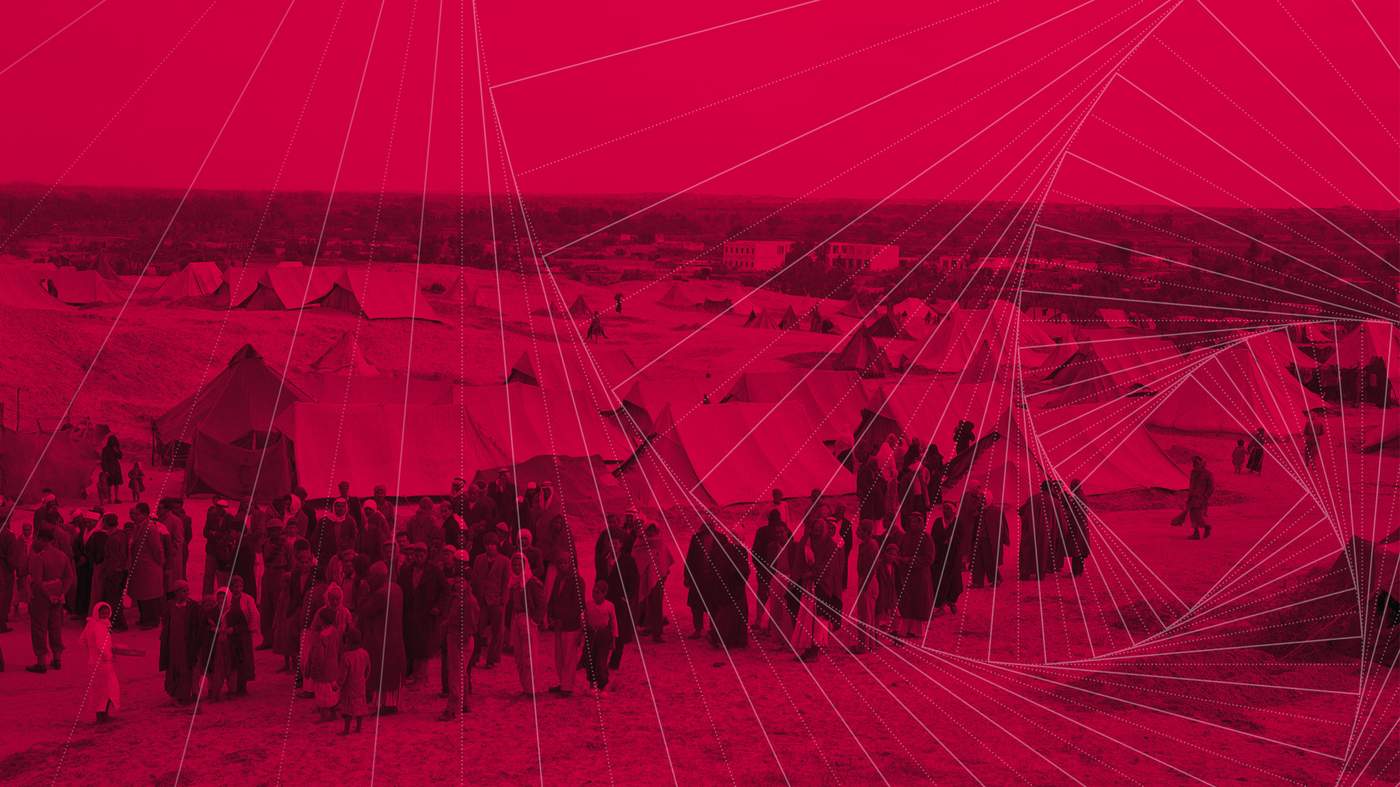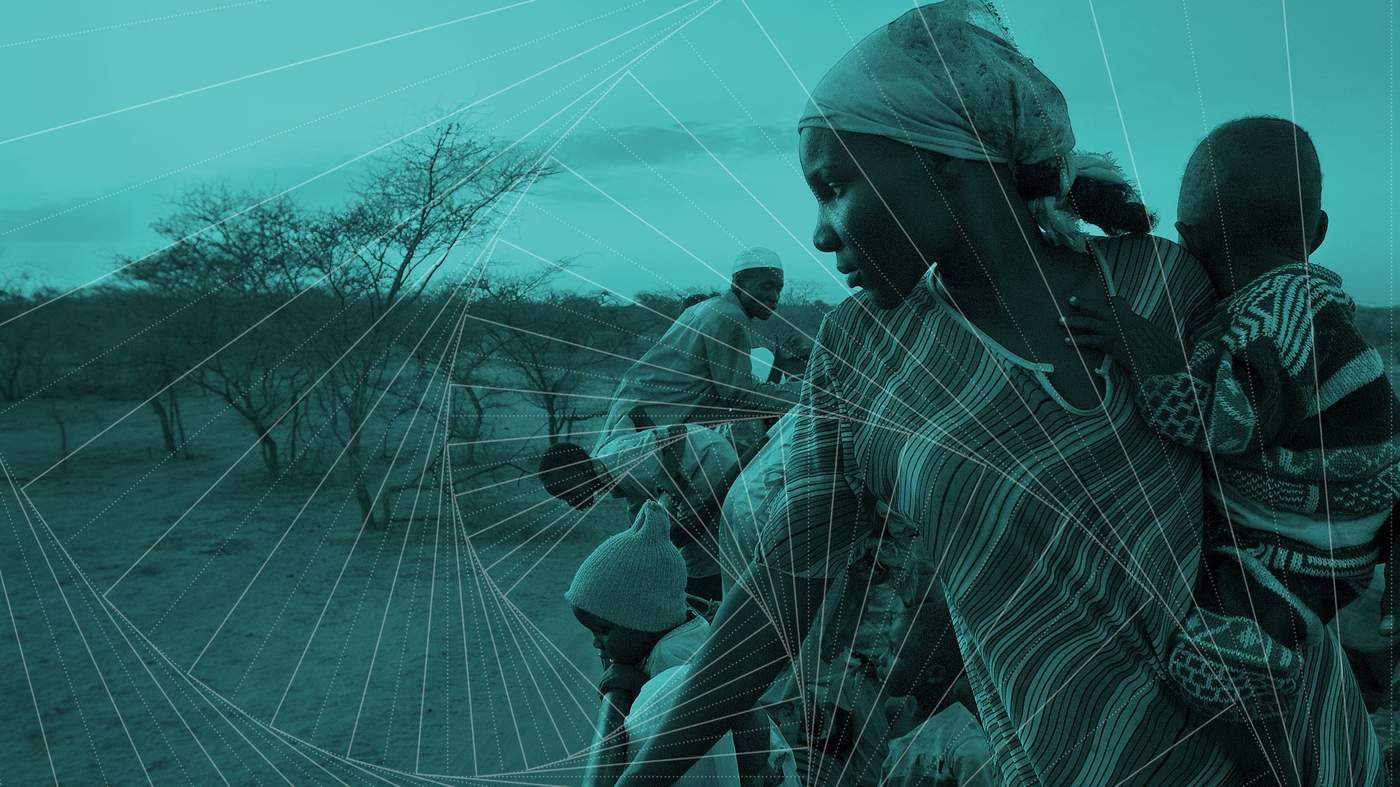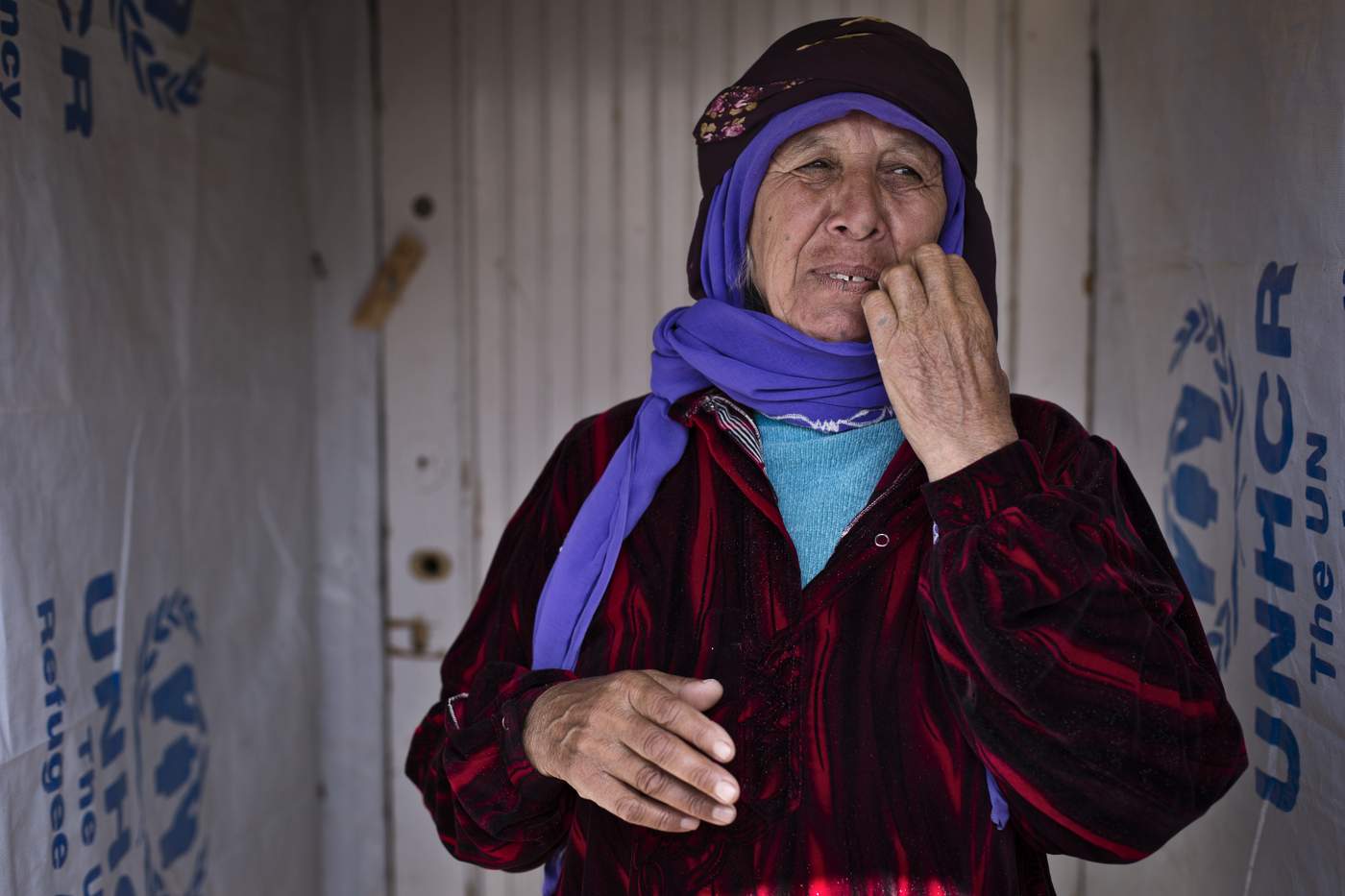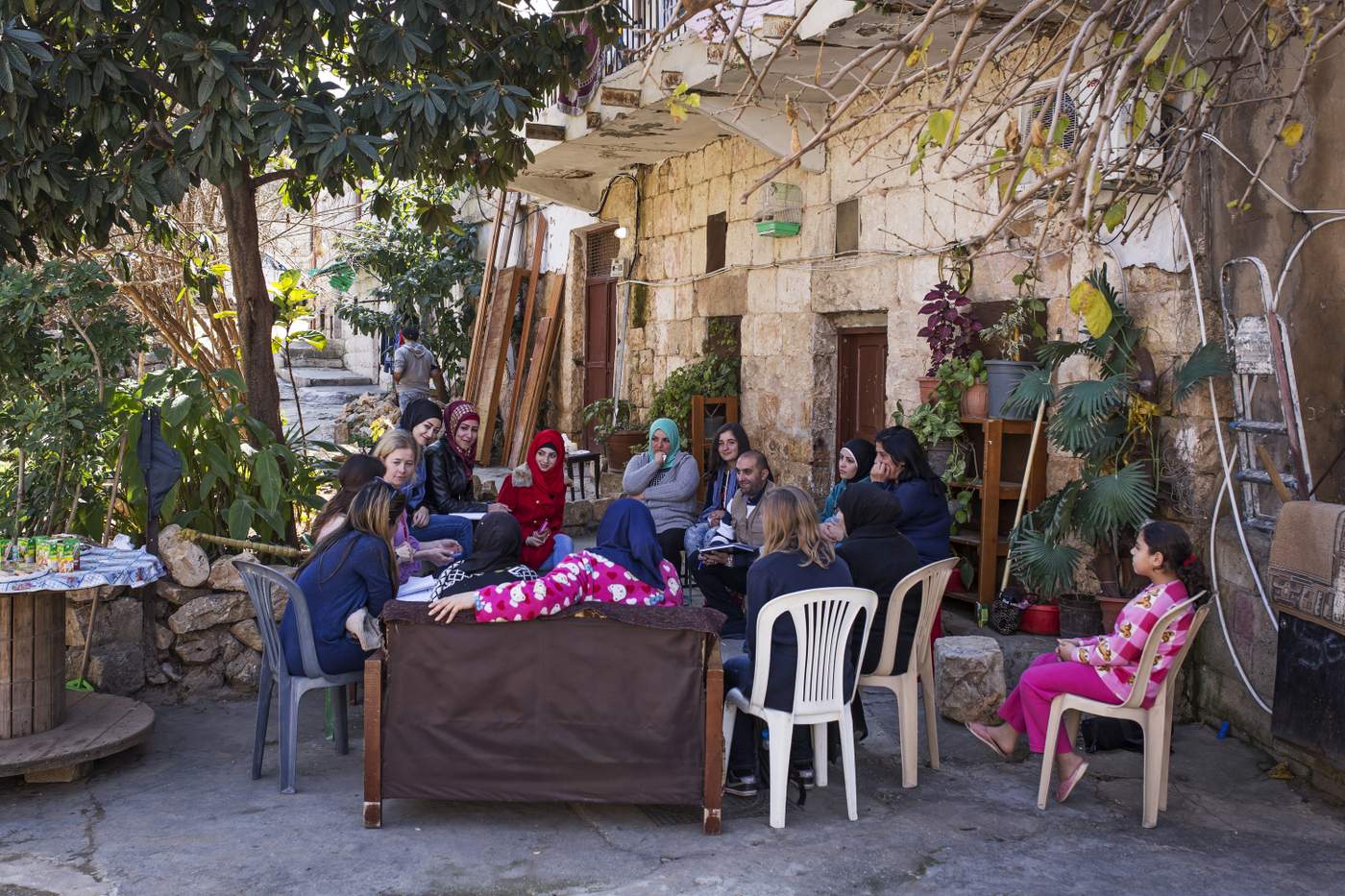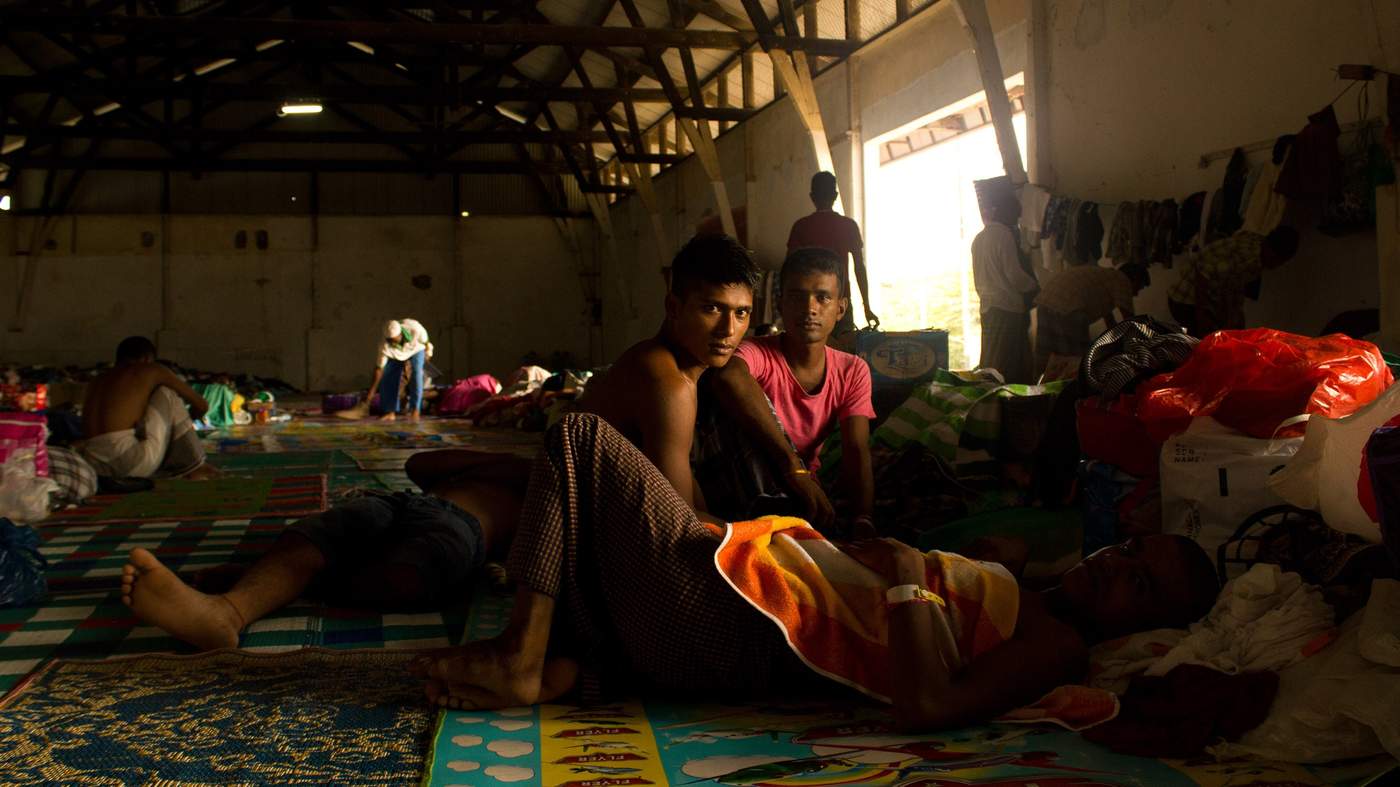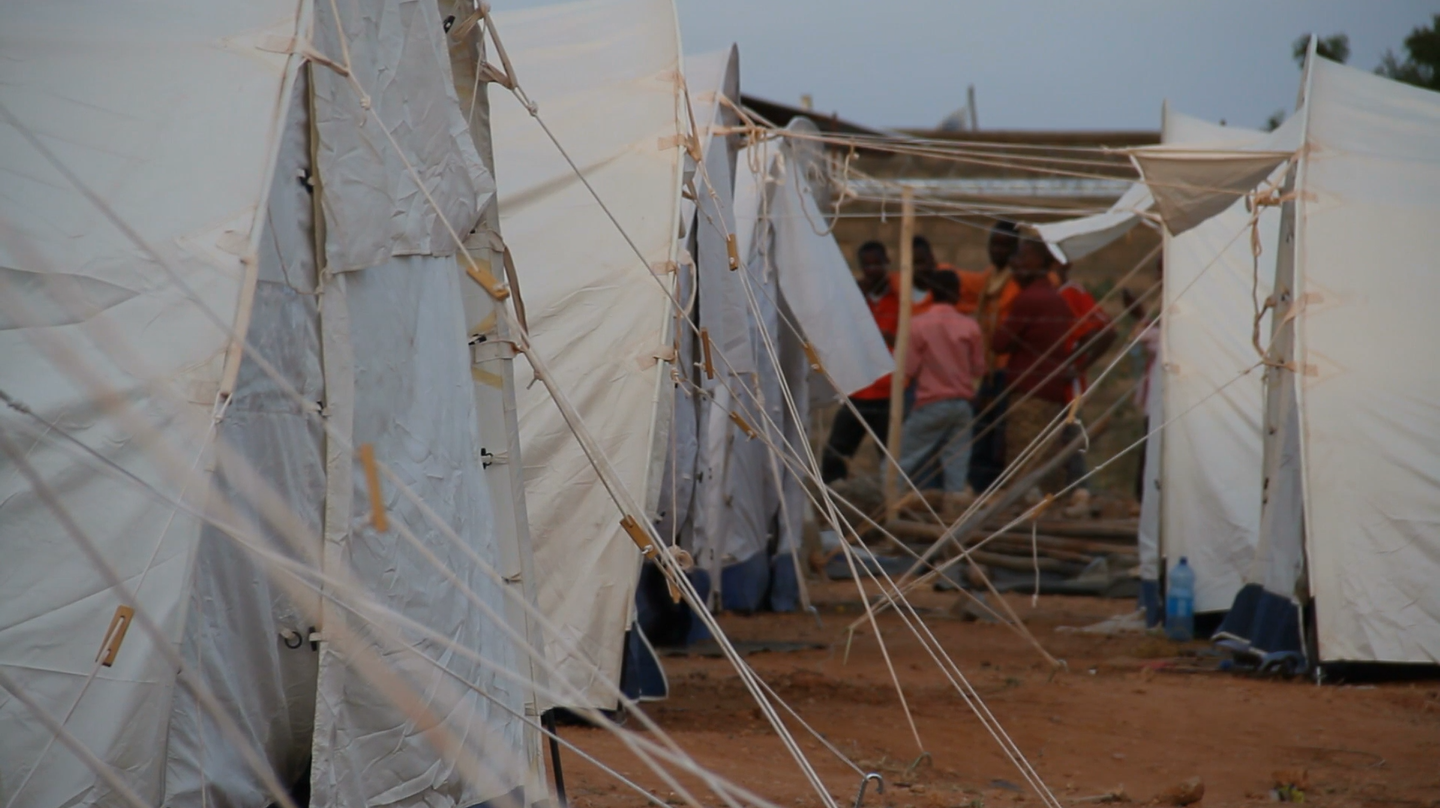Despite a decade of system-wide reforms, the humanitarian sector is still falling short in the world’s most enduring crises.
The humanitarian system is simply not doing a good job in the eyes of the people it aims to help.
It is time for the humanitarian sector to let go of some of the fundamental – but outdated – assumptions, structures and behaviours that prevent it from adapting to meet the needs of people in crises.
This is a proposal for radical change to create a humanitarian system that is fit to respond to the challenges of both today and tomorrow. It calls for:
It is based on the findings of a larger report, ‘Time to let go: remaking humanitarian action for the modern era’.
The humanitarian system is caring for more wounded and more hungry people in more places than was conceivable even a generation ago.
Yet, despite this progress, it is struggling to keep pace with the growing demands placed on it.
Attempts at change have focused on improving the mechanics of response and the system already in place, rather than tackling more fundamental assumptions, power dynamics and incentives.
The nature of crises and conflicts is changing
Humanitarian crises are becoming more frequent, more complex and affect more people. Rapid urbanisation and climate change are only likely to increase the frequency and severity of disasters and heighten people’s vulnerability to crises. Crises are also lasting longer.
In 2014, more than 90% of countries experiencing humanitarian crises had had humanitarian appeals for more than three years.
Continued civilian suffering in conflicts in Syria, South Sudan and Yemen is a sobering reminder of the international community’s continued failure to translate legal obligations around the conduct of war into tangible benefits for civilians.
Militant non-state armed groups like Al-Shabaab, Boko Haram and Islamic State are becoming more prominent. These groups control vast territories in Afghanistan, the Central African Republic (CAR), Iraq, Libya, Mali, Nigeria, Somalia, Syria and Yemen.
Some, notably Islamic State, have significant global reach, power and authority, based on ideology not sovereignty or territorial control.
Meanwhile, changes in the tools of war – including drones and automated weapons – point to a more remote and anonymous form of warfare.
Affected governments, and armed opposition groups, are increasingly setting the terms under which aid is delivered.
More and more, governments themselves are taking the lead and controlling humanitarian responses.
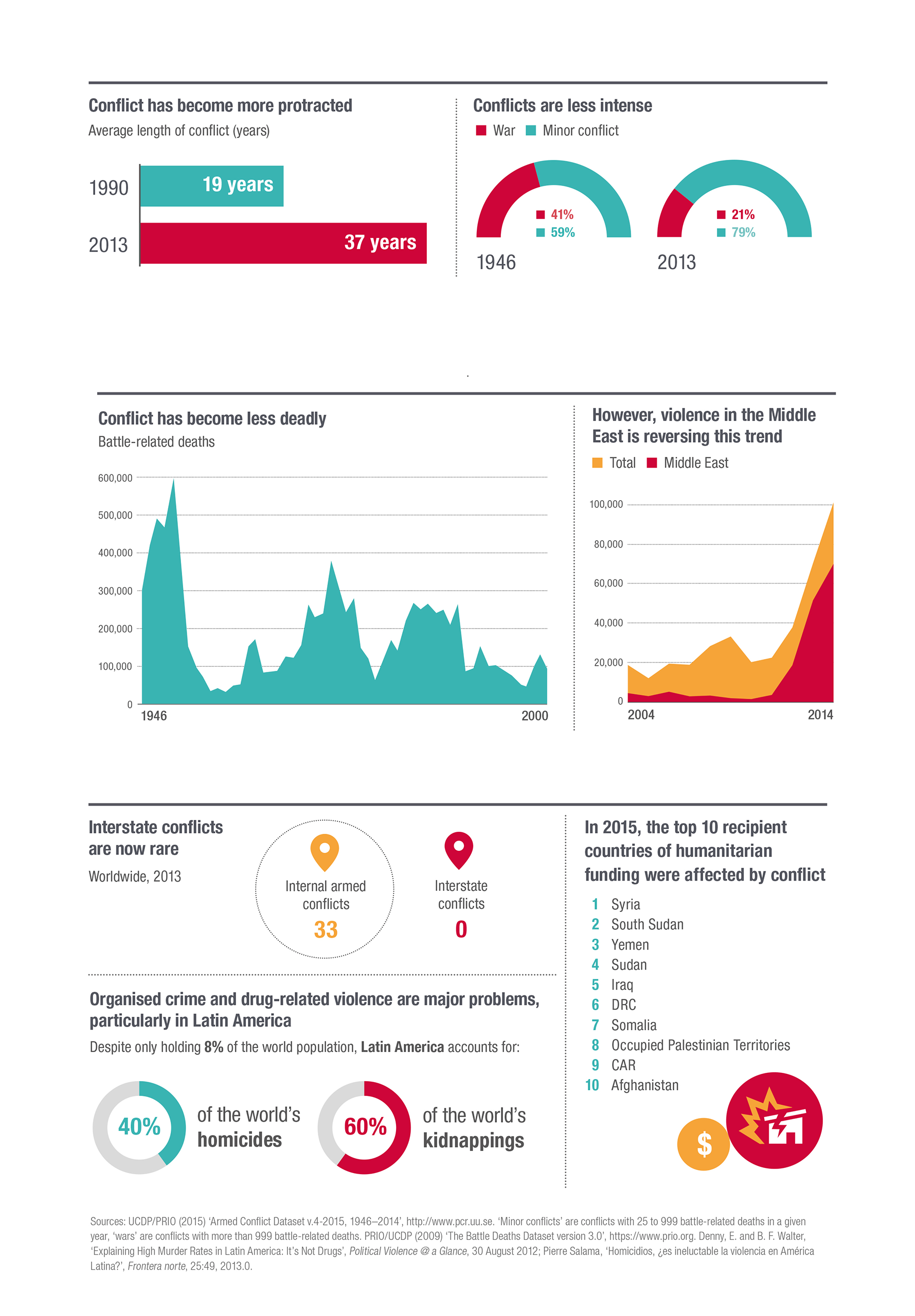
Newer actors are getting more involved in responding to crises
Geopolitical changes have led to the rise of newer donors, such as China, Saudi Arabia and Turkey.
In parallel, there has been a significant expansion in the number, type and size of humanitarian organisations and a proliferation of players laying claim to the humanitarian cause, including local organisations, diasporas, solidarity groups, regional organisations, militaries and private companies.
Close to the front lines, with local knowledge and networks, local organisations are often the most effective first responders.
Taken together, developments in humanitarian response over the past five decades or so have been substantial. Humanitarian actors should be rightly proud of their enormous capacity to reflect, rethink and innovate.
But attempts at change have focused on embracing new techniques, tools and approaches at the expense of tackling more fundamental problems. Piecemeal reforms amount to tinkering around the edges of the current system.
The system’s response to the coordination, capacity and leadership failures in Darfur and the Indian Ocean tsunami response was the introduction of the Transformative Agenda in 2011.
Primarily a technical exercise, such reforms amount to a rearranging of the deck chairs, rather than the construction of a more seaworthy ship better able to navigate the challenges of a rapidly changing world.
What has yet to come are efforts to challenge the underlying structures and assumptions on which the international humanitarian system – and its key institutions – operate.
The humanitarian sector is stubbornly resistant to change.
Asymmetrical power dynamics and perverse incentives exclude organisations beyond its traditional horizons.
The barriers to more constructive relationships are high.
Money and power
The international humanitarian sector is – and has been – dominated by five government donors and the European Union (EU). In 2014, 83% of humanitarian funding came from government donors in Europe and North America.
There is also a parallel concentration of funding recipients. Between 2009 and 2013, UN agencies and non-governmental organisations (NGOs) received 81% of humanitarian funding from Development Assistance Committee (DAC) governments. In 2014, local and national NGOs directly received just 0.2% of total humanitarian assistance as reported to the UN Financial Tracking System.
Limiting the number of recipients can reduce donor transaction costs, but it also creates a highly centralised and exclusive group of major humanitarian players.
Within the sector, the largest humanitarian UN agencies and INGOs collectively wield significant power and resources, creating high barriers to entry and excluding new entrants.
In countries with weak governments, such as Afghanistan, Somalia and South Sudan, they can operate separately from – and sometimes in opposition to – the sovereign state.
Having created such a structure, international aid agencies have little incentive to cede power and hand over responsibility to other organisations that could serve as competition for funding.
Most engagement with local NGOs is in the form of sub-contracting arrangements, rather than genuine strategic engagement that enables them – technically and financially – to drive a response more ably and confidently.
This makes aid much less cost-effective. Donors often provide funds to UN agencies or INGOs. After taking a share themselves, agencies pass the money along to local NGO partners and sub-contractors, which themselves apply institutional overheads.
At least 20% of funding for education for Syrian refugees in Lebanon is believed to have been lost due to donors’ preference for funding UN agencies and INGOs over giving directly to local NGOs.
Opening up the system’s funding structure to others creates obvious threats to its current members.
UN and NGO fundraising teams and field office managers are at least partly assessed on the basis of how much money they bring in for their organisation.
Likewise, organisations’ senior leaders are answerable to their boards of directors for growing or at least maintaining funding and staff numbers. Within most aid organisations, the quest for these resources has become an objective in itself.
This is not to suggest that individuals working for aid organisations are primarily self-serving.
Rather, pressure for institutional growth can lead some to pursue funds for programmes they are not best placed to deliver, in crises where they may lack expertise.
During the Ebola crisis, major donors pressured NGOs to build and operate Ebola emergency treatment centres despite their lacking health or logistics expertise.
Destructive competition
The humanitarian world is a competitive market, one that makes real collaboration, particularly among NGOs, difficult. Competition has not improved efficiency and performance.
The sector is crippled by high levels of organisational insecurity, competitive pressures and financial uncertainty, as UN agencies and NGOs compete to raise money and secure donor contracts.
These contracts are often performance-based, renewable and short-term, encouraging opportunism in a highly turbulent and uncertain market.
Such destructive competition has led to opportunism and self-interested action and discourages NGOs from specialising and seeking complementary roles.
Accountability to donors – not aid recipients
Together with anti-corruption and counter-terrorism concerns, donor accountability requirements have served to exclude potential operating partners.
In order to receive funding, many donors require NGOs to provide years of audited financial statements and demonstrate that they have managed large sums of money. While understandable, these policies create high barriers to entry for small organisations.
Meanwhile, accountability to people affected by crises features prominently in aid rhetoric, but is less in evidence in practice.
In reality, affected people have limited power or influence over the workings of humanitarian aid.
Several initiatives have tried to understand what affected people think about humanitarian assistance.
However, humanitarian aid remains largely determined by what goods and services can be supplied, rather than what people need or want.
Humanitarian exceptionalism – a clear distinction or a hypocritical division?
Humanitarians have always seen their work as distinct from other forms of aid.
Guided by principles of humanity, impartiality, independence and neutrality, and grounded in International Humanitarian Law (IHL), a truly ‘humanitarian’ response is supposedly something that only humanitarians can do and understand.
The humanitarian principles are intended to distinguish humanitarian action from political and security objectives, increasing acceptance among communities and warring parties.
This is believed to facilitate negotiations for access to affected communities and allow humanitarian organisations to operate in insecure and high-risk environments.
Proponents also claim that maintaining humanitarian action as separate and distinct helps to preserve the speed of response and ensure that the neediest get the aid they require.
Since the mid-1990s, governments, policy-makers, donors and aid agencies have pushed for greater coherence and closer links between humanitarian and development, security and political objectives.
This search for coherence has called humanitarian exceptionalism into question and divided the humanitarian community.
Some feel it serves to make humanitarian action subservient to political and security objectives, compromising principles of neutrality and impartiality.
Others argue that such an approach recognises the multiple causes of crises (chronic poverty, increased vulnerability, loss of livelihoods), and the need for more comprehensive solutions and political action.
At the same time, many outside the traditional sector challenge the universality of humanitarian principles, viewing them as vectors of Western values and vehicles for unwelcome Western intervention.
In reality, the majority of organisations engaged in humanitarian assistance combine their humanitarian assistance with development and human rights or conflict-resolution work.
They are also concerned with political and societal change, even if most of these organisations still feel compelled to define their work in crisis-affected areas with reference to humanitarian principles.
As a result, the formal humanitarian system’s stated commitment to humanitarian principles has rarely been matched by adequate attention to how humanitarian agencies should apply them in their work.
Picking and choosing when and which humanitarian principles apply, while claiming to be abiding by all of them, undermines their utility and reinforces the perception that the humanitarian system is operating to a double standard, and undermines trust in the aid endeavour.
In practice, humanitarian exceptionalism has served to sideline those outside the system who may not subscribe to all of the principles, or seek to adapt them in their own terms.
By relentlessly guarding their principles – and not necessarily adhering to the principles themselves – many humanitarian organisations put in place artificial and hypocritical divisions that prevent them from recognising their own limitations.
As such they overlook capacity, funds, understanding and expertise from others who may not be card-carrying humanitarians, but may be better placed to help.
The humanitarian sector must regain legitimacy, for itself and in the eyes of people in crisis.
The sector must let go of the structures and behaviours that have prevented it from evolving, innovating and meeting the demands of the modern day.
Our proposal calls for:
1. Letting go of power and control
A more modern humanitarian action requires letting go of power and control by the formal Western-inspired system. It should ask, not ‘what can I give?’, but ‘what support can I provide?’
Rather than reforming mandates, this requires a change in mind-set. It necessitates the development of a more diversified model that cedes power and resources to those currently at the margins of the formal system.
Alongside a shift in mind-set across the system, practical changes include:
- UN agencies and large INGOs should reorient their activities away from direct implementation, taking on a more enabling role. Such a shift would support national and local organisations to undertake crisis response roles on their own. This requires channelling funds to and rewarding staff for collaborating with local organisations.
- The Inter-Agency Standing Committee, the humanitarian system’s high-level coordination body, should enlarge its membership to include non-traditional organisations and decentralise leadership and strategic-level decision-making to those closer to crises.
2. Letting go of perverse incentives
The humanitarian system must cast off the assumptions, power dynamics, biases and trade-offs that work against evolution and change. It must redefine success so that the needs of people affected by crises trump organisational drives for greater resources and visibility.
This requires a major shift in the behaviours and financial incentives of the sector’s core donors. Examples of this in practice include:
- Humanitarian donors should reduce barriers to financing local NGOs and reward organisations’ ability to work more effectively and collaboratively with local organisations.
- Donors could consider developing a global humanitarian funding instrument, with a diverse donor base, providing predictable and flexible funds.
- Donors should promote collective – as well as individual – performance by rewarding organisations that are able to genuinely work more effectively together, take calculated risks and innovate and institutionalise lessons learned into policies and practice.
3. Letting go of divisions and embracing differences
As crises last longer – and straddle conflicts, disasters and endemic poverty – humanitarian responses have to be more honest, realistic and ethical in responding to people’s needs. For example:
- Humanitarian organisations should manage expectations of what humanitarian activities and funds can and cannot do. They should also work more closely with development organisations when more complex and longer-term approaches are needed.
- The sector should be more honest in using the label ‘humanitarian’, applying it to a more ‘classic’ form of humanitarian action undertaken by specialised organisations that are able to uphold independent and neutral conduct, that are knowledgeable about IHL and that are seen as legitimate in the eyes of warring parties.
- It should also be more accepting that different forms of relief can co-exist and enable skilled and capable responders, whether international, governmental or local, to work more cohesively and with the full extent of capacity, skills and resources to meet – and potentially resolve – people’s needs.
- Humanitarian organisations should let go of the idea that only humanitarians can provide effective relief. The sector must accept that different forms of relief – from development organisations, religious organisations and private sector companies – can co-exist and can be equally legitimate. Effectively addressing people’s needs, not ideology, should dictate approaches to crisis response.
Sources are all available in the full report.

